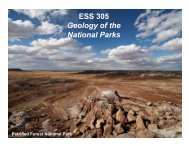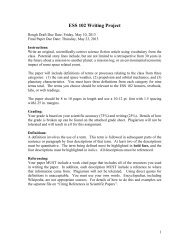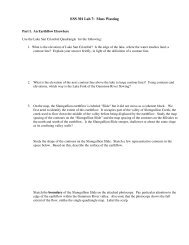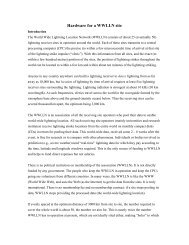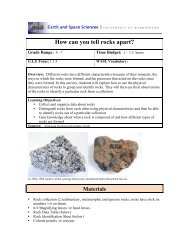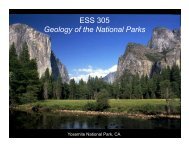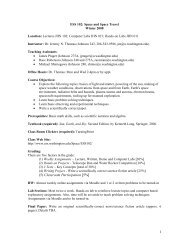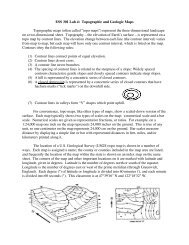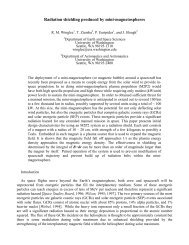Definition of a continuum. - Earth and Space Sciences
Definition of a continuum. - Earth and Space Sciences
Definition of a continuum. - Earth and Space Sciences
You also want an ePaper? Increase the reach of your titles
YUMPU automatically turns print PDFs into web optimized ePapers that Google loves.
Figure 1: Density <strong>of</strong> a material averaged over dimensions that are similar to<br />
(a) <strong>and</strong> much larger (b) than the spacings <strong>of</strong> constituent molecules or atoms.<br />
if r is much larger than molecular dimensions, ρ r is well defined <strong>and</strong> changes<br />
only slowly with position as in Fig. 1 (b).<br />
Another illustrative example <strong>of</strong> a constitutive property is thermal conductivity.<br />
What can be said about the thermal conductivity <strong>of</strong> a rock composed<br />
<strong>of</strong> grains <strong>of</strong> differing minerals, say a granite. Granite is an aggregate <strong>of</strong> several<br />
minerals: feldspar, quartz, biotite, <strong>and</strong> others. Each mineral grain can<br />
safely be considered a <strong>continuum</strong> on averaging scales smaller than the grain<br />
size (typically order 1 millimeter) <strong>and</strong> larger than molecular dimensions. To<br />
some extent the different mineral types have different thermal conductivity.<br />
If we were to consider heat flow with spatial resolution on the order <strong>of</strong> a single<br />
or small number <strong>of</strong> grain sizes, then the relevant thermal conductivity would<br />
show substantial local variations. On this scale we would have to deal with<br />
the properties <strong>of</strong> each constituent mineral <strong>and</strong> there is no well-defined single<br />
<strong>continuum</strong>. We would have to consider it as a complex aggregate <strong>of</strong> discrete<br />
continua <strong>and</strong> take account <strong>of</strong> all <strong>of</strong> the boundaries between them. On the<br />
other h<strong>and</strong>, if we consider an averaging scale that is much larger than the<br />
grain size, then the thermal conductivity would vary smoothly. On this scale<br />
we can think <strong>of</strong> a single <strong>continuum</strong>, granite, with its own properties which<br />
represent some sort <strong>of</strong> average <strong>of</strong> the properties <strong>of</strong> the constituent minerals.<br />
Now we consider kinematics. In a <strong>continuum</strong> it must be possible to define<br />
local displacement <strong>and</strong> velocity that vary continuously, except possibly for<br />
2



